12. Soft robotics¶
Inspiration¶
Using Vinyl and the Heat Press Machine¶
I loved the idea of making my own “balloon robot”. I started looking for inspiration and the approach I got was to follow neon signs as they have a continuous flow for the gas to flow. Therefore I started searching for ideas and I chose the best possible: A long neck Dinosaur!
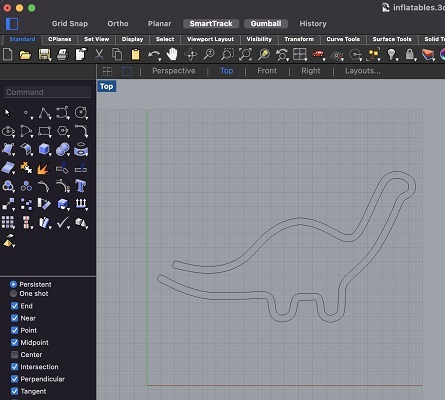
Designing the channel for the syringe required considering the nozzle size to ensure a proper fit to my inflatable.
To allow the syringe to move smoothly through the channel without getting stuck, it was important to consider a tolerance. For this case we added 2 mm to the measured outer diameter of the syringe nozzle to ensure a proper fit. Note that it is important also to choose a channel diameter that is slightly larger than the outer diameter of the syringe nozzle plus the tolerance value. In this case, the outer diameter of the syringe nozzle was 3 mm plus the tolerance value 2 mm, the channel diameter was defined to be at least 5 mm
I designed the drawing in Rhino using pipe and afterwards I laser cut the design in the baking paper 1. One important think while laser cutting this thin film is that as long as you cut your design, it is important to paste it with tape to avoid that it is damaged due to the air inside the chamber.
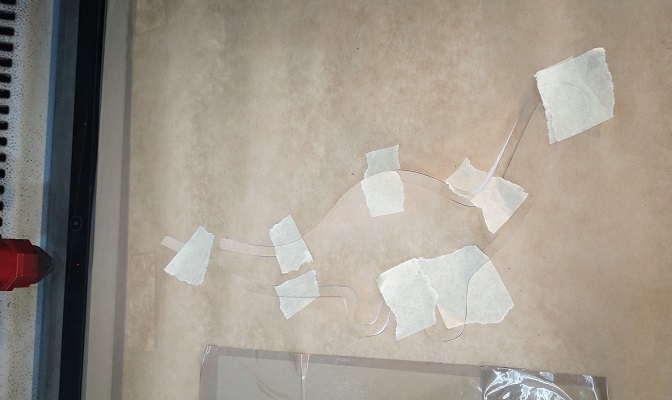
Parameters for Laser Cut
The parameters I set for the laser cutter were: Power 30 ; Speed 5 ; PPI/Hz: 1000
Then align the baking paper into the Vinyl paper and cut
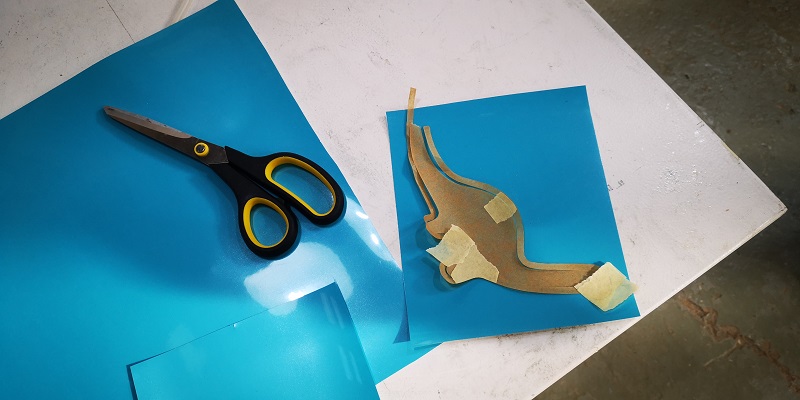
Then preheat the heat press machine. You can set the temperature and the time. Then set your materials in the following order: 1 layer of baking paper then the Vinyl paper, baking paper, Vinyl paper, and baking paper. This is to avoid that the Vinyl paper to stick into the machine

For our inflatables we set the machine at 130°C, 20 seconds. However, this technique did not work and in order to complete the assignment I ironed the vinyl for 5 seconds at the same temperature and it worked!
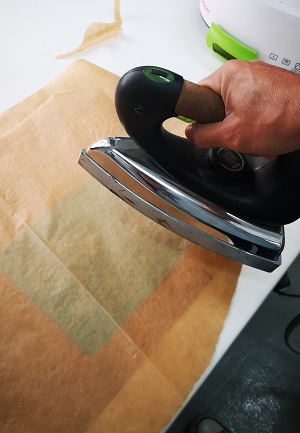
Then I tested the soft robot with a syringe and I got the most beautiful inflatable in the world!
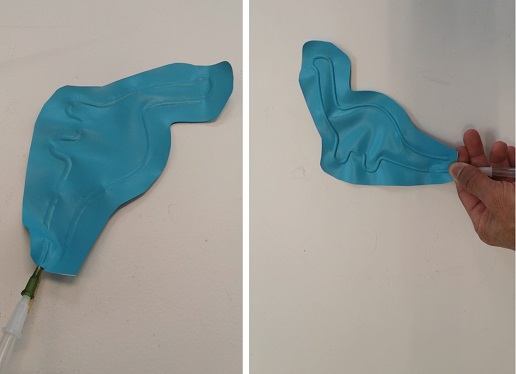
Using Silicone in an Acrylic Mold¶
For my second prototype I wanted a soft robot with movement. According to the lecture and some documentation from previous students, I saw that long ellipses can lead to movement once inflated. So I designed a Mold to laser cut in Acrylic and then fill it with Silicone to create the inflatable.
In soft robotics, the minimum distance required for air to flow depends on various factors, such as the type of soft robot, the material properties, the air pressure, and the specific design of the soft robot. However, geometries with 90 degree angles, can be a problem for air flow in soft robots. The sharp angles can create areas of high resistance to airflow, causing air to get trapped or inactive. This can result in inefficient or uneven distribution of air pressure, which can affect the desired deformation or movement of the soft robot. In some cases, the trapped air can even cause the soft robot to lose its intended shape or fail to function properly.
To optimize the air flow in soft robots, smooth curves or rounded geometries are used instead of sharp angles to minimize resistance and promote even distribution of air pressure. This allows for efficient actuation and deformation of the soft robot.
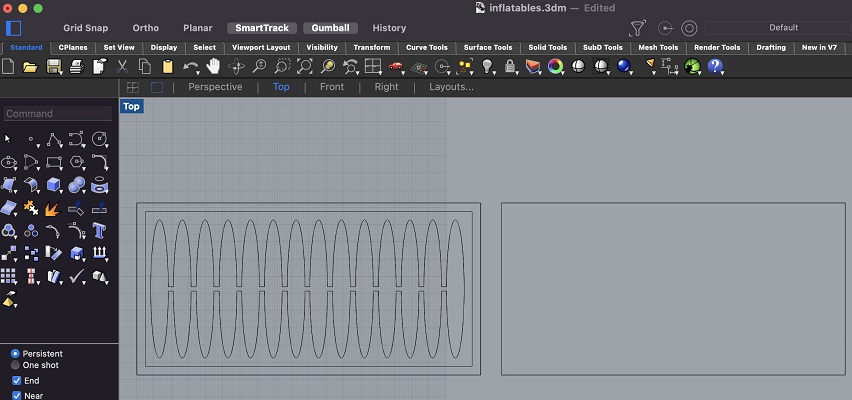
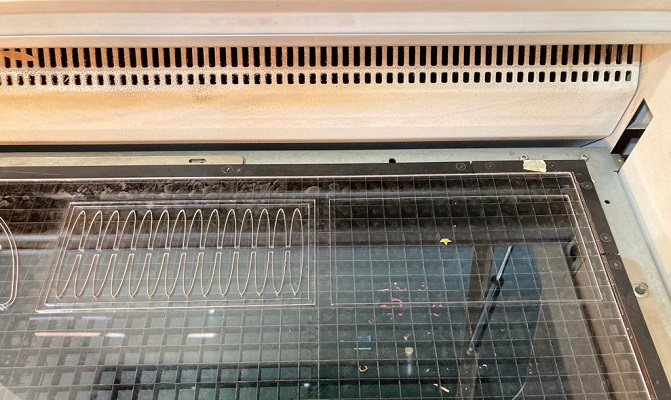
Parameters for Laser Cut
The parameters I set for the laser cutter were: Power 65 ; Speed 0,5; PPI/Hz: 20 000
Then I removed the pieces and paste them with a special glue for acrylic.
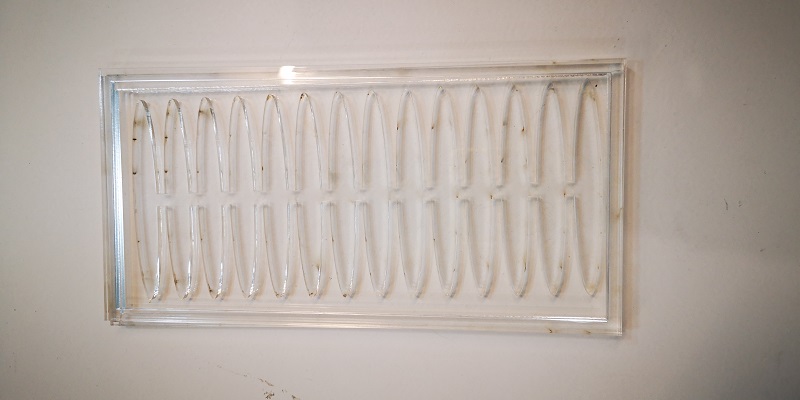
Then, for the silicone mix, The proportions were 1 to 1 for both bottles. I calculated the volume of my mold in order to avoid waste of material and at the end there were no leftovers! For the cover of my mold, I used a textile and put the remaining silicone so that it creates a solid reinforced layer and I can close my inflatable.
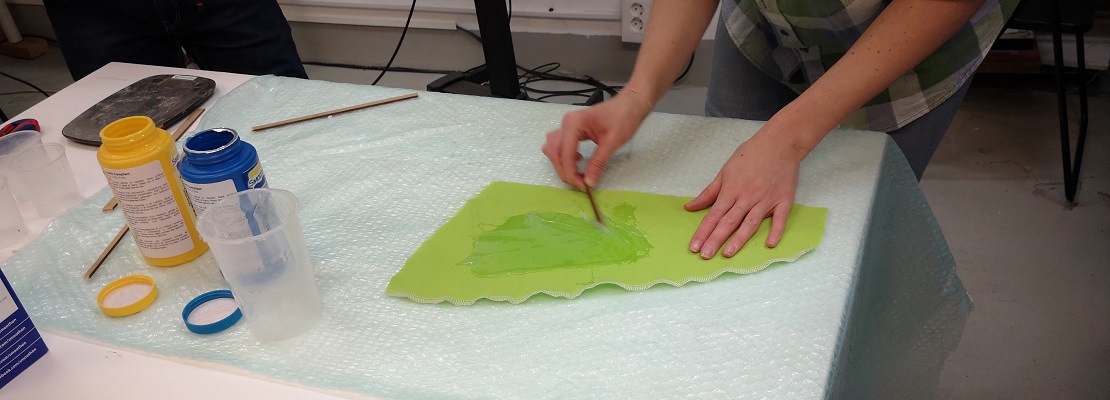
Silicon type
Mold Star™ 30 - mold rubbers are easy to use which are mixed 1A:1B by volume (no weighing scale necessary). Mold Star™ silicones feature relatively low viscosities and vacuum degassing is not required for most applications. Mold Star™ 30 is a harder material, with a 30A Shore hardness. https://www.smooth-on.com/products/mold-star-30/
Finally, After the lecture where Adriana explained to us that we can produce air as a product of chemical reactions and this air inflates de molds, I want to make a chemical reaction with menthos and coke to see how this can work!
Then, once the silicone was dry, I removed the two silicon moulds out of the acrylic moulds and glued them with silicone.
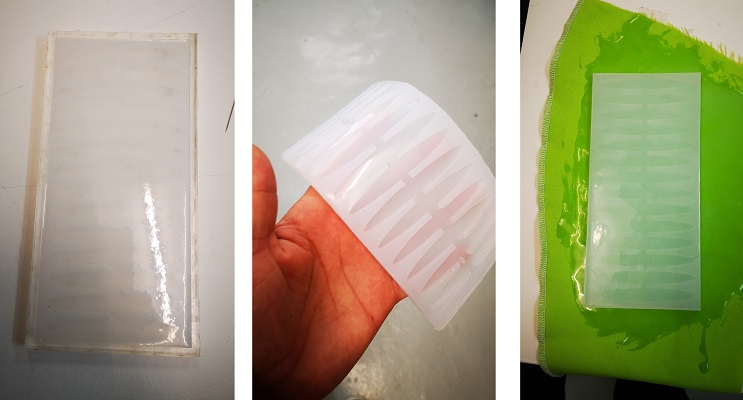
However, note that before sealing completely the mould, I chopped small pieces of menthos within the inner space so that it creates a chemical reaction with the Coca Cola. Note that the cocacola and the air will be put using a syringe and the needle will trespass the silicone outer wall
Finally, as everything was set, I started pumping the Cocacola within the mould but nothing happened ☹ I am not sure why… one explanation I find is because in all the videos found in internet, the menthos are thrown into the cocacola and there is the reaction. In this case, I was adding coke into the menthos, and is not the same to put A into B than B into A
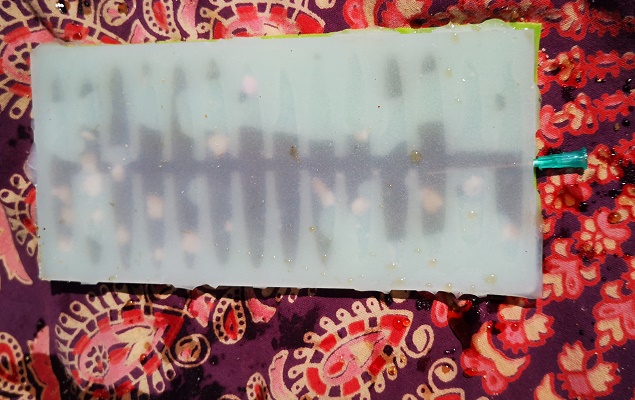
Then, to prove my mould, I inflated it with air and it worked amazingly!! I was extremely happy and I will definitely repeat this unforgettable experience creating different moulds and playing with science 😊
Thank you Ana, Petra and Adriana for your time, explanations and support!!